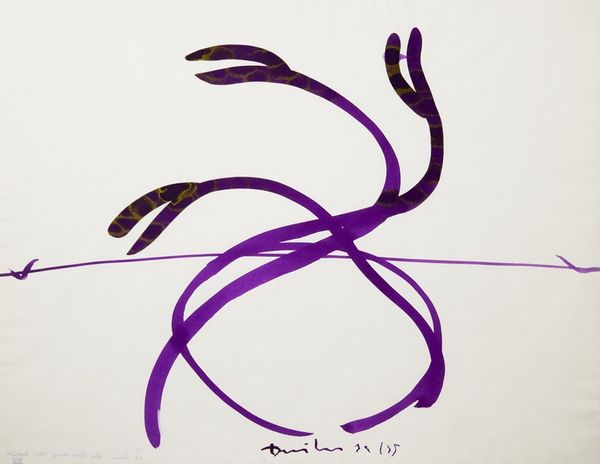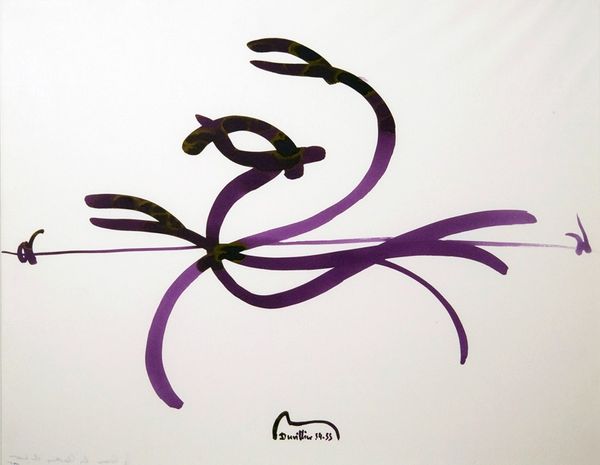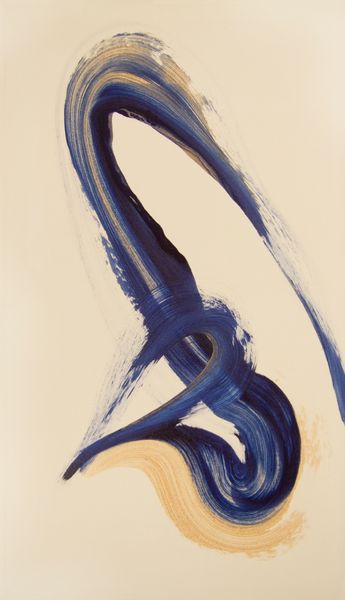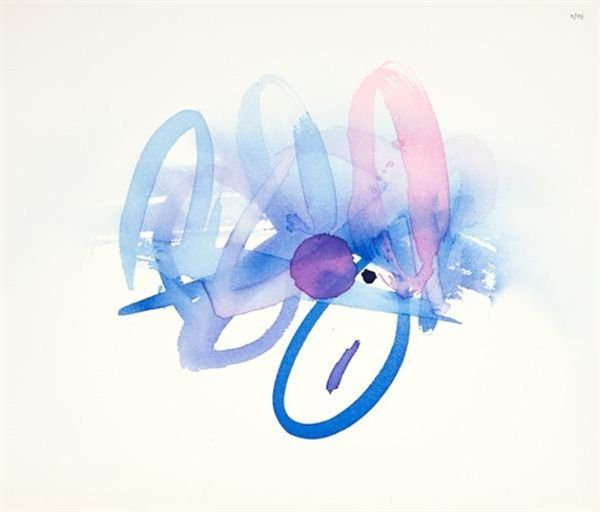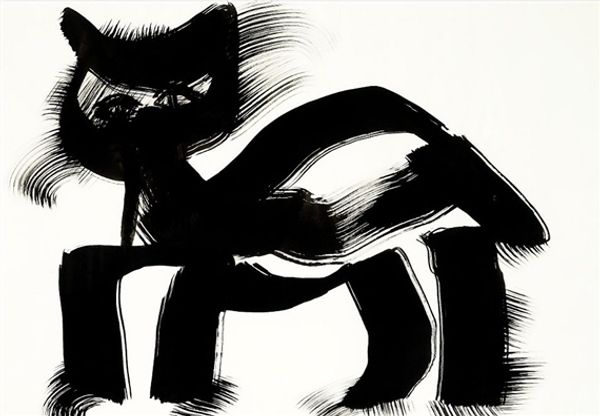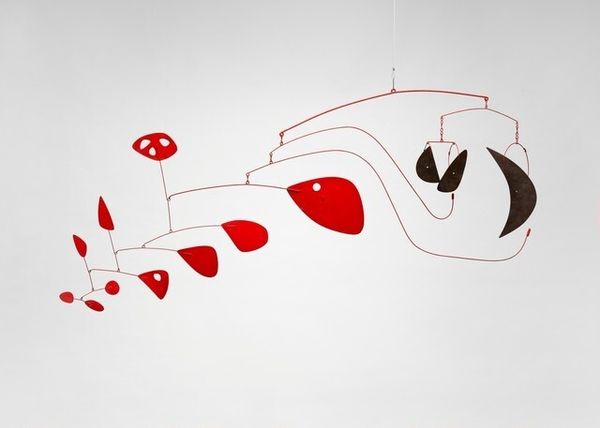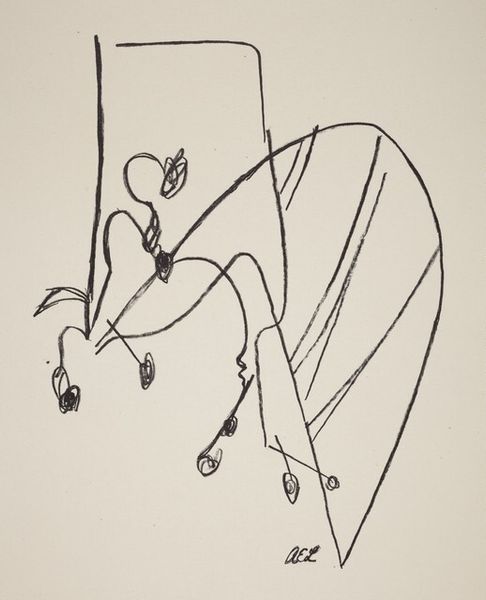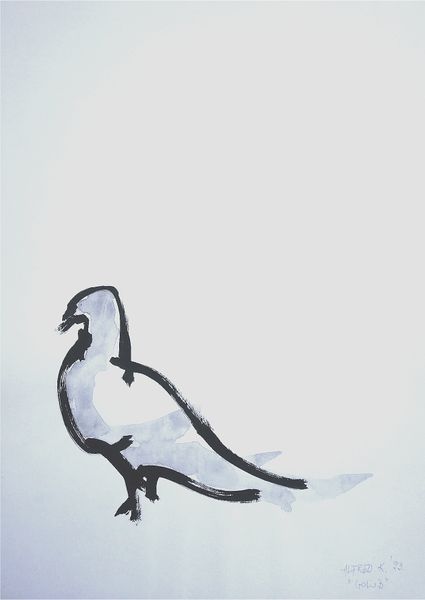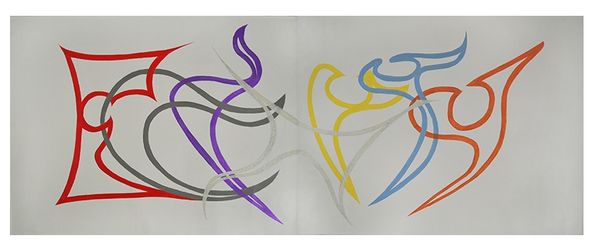
drawing, ink
#
stencil art
#
abstract-expressionism
#
drawing
#
non-objective-art
#
stencil
#
pop art
#
ink
#
abstraction
#
line
Copyright: Rene Duvillier,Fair Use
Curator: Let’s discuss "Serpent de mer," a 1955 ink drawing by René Duvillier. It strikes me as an intriguing example of abstract expressionism meeting… perhaps a hint of pop art sensibility? Editor: My first thought? It’s wonderfully quirky! Almost like a purple squiggle having a fantastic day. There’s a lightness and playful energy that I immediately connect with. Curator: I find it fascinating how Duvillier uses line. It is tempting to see the gestural qualities in terms of Abstract Expressionism, and the seemingly direct reference of subject matter, ‘Serpent de mer’, invites readings into environmental and maritime narratives but the minimalist strokes complicate that immediately. Given the historical context, particularly post-war anxieties, do you think the abstraction serves to deflect from overt political or social commentary, and thus provides a wider social critique, speaking to our collective state? Editor: Oh, absolutely! It could be a serpent shedding its skin, or maybe one just about to devour something…a whale? a plastic bag? The beauty of it is the sheer amount of space available for reflection: it teases your mind and sends you spinning with images! Plus, that luscious purple – so bold against the stark white background. You mentioned post-war anxieties; to me, that bold colour is a kind of resilience against it: a shout of defiance. Curator: I agree. The stencil art elements, although subtle, disrupt conventional notions of artistic authorship too. Stencils offer a form of democratisation of art and challenge preconceived ideas of uniqueness or rarity so common to traditional understandings of drawing or art in general. This brings me back to the question of interpretation, it is hard not to feel that we are invited to consider its many facets. The name certainly hints to something quite specific, a Sea Serpent, or perhaps more specifically 'The' Sea Serpent. Editor: Exactly. It keeps you guessing and reinterpreting. I love art that does that, that makes you an active participant in the creative process. And yes, perhaps "the" serpent is the important question here - it might even question what the nature of things are in relation to everything around us, that the specific thing holds no difference. But really, who am I to say for sure? I feel very small looking at it – and also somehow completely free to think up my own narrative, you know? Curator: It is quite special. "Serpent de mer" encapsulates so many complex ideas that were percolating through society and aesthetic disciplines at the time while somehow also feeling very contemporary, and dare I say, relatable. Editor: Right? It’s playful, profound, a bit cheeky, and ultimately unforgettable. I think Duvillier would've wanted us to use the picture, feel with the picture, and then move forward and form something new with our life experience after this image. I can’t think of a better compliment to a great artist.
Comments
No comments
Be the first to comment and join the conversation on the ultimate creative platform.
